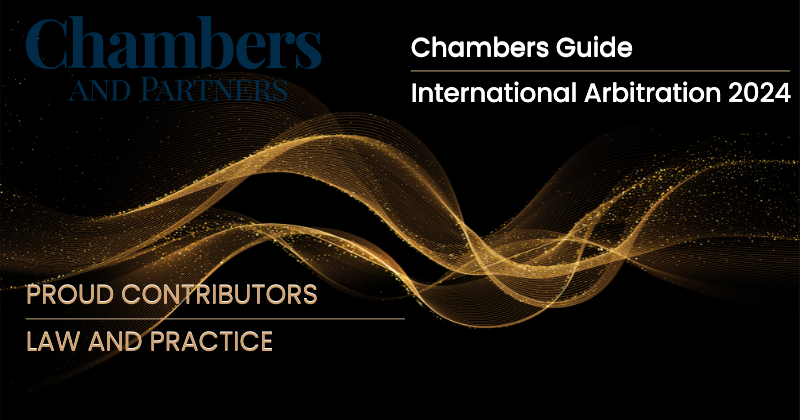However, the promulgation of the Constitution of Kenya, 2010 (the Constitution) brought with it Article 47 which expressly provides for the right to fair administrative action that is expeditious, efficient, lawful, reasonable and procedurally fair. In operationalising Article 47, Parliament subsequently enacted the Fair Administrative Action Act, 2015 (the FAAA). The FAAA has transformed judicial review in Kenya by expanding its scope from a review of the decisions of only public entities or administrative bodies, to include any person, body or authority which exercises a judicial or quasi-judicial function.
In this article we shall look at section 9 of the FAAA, which provides for the procedural aspect of judicial review applications by delineating the circumstances under which one may institute such proceedings. We will then examine the exceptional circumstances that might allow a party to bypass a prescribed statutory remedy and pursue a judicial review remedy through Court instead.
Statutory Remedies
Section 9 (1) of the FAAA provides that a person aggrieved by an administrative action may apply for judicial review of such a decision in the High Court or a subordinate court upon which original jurisdiction is conferred pursuant to Article 22 (3) of the Constitution. However, section 9 (2) of the FAAA limits this avenue of redress by providing a specific threshold to be satisfied whereby administrative action is only subject to judicial review if alternative mechanisms (including internal mechanisms for appeal or review), as well all remedies available under any other written law, are first exhausted.
Section 9 (2) of the FAAA may be viewed as a codification of the doctrine of exhaustion of administrative remedies. In applying the said doctrine, the Court of Appeal in the case of Geoffrey Muthinja & another v Samuel Muguna Henry & 1756 others (2015) eKLR, stated that the requirement is in conformity with Article 159 of the Constitution as it encourages the use of alternative dispute resolution. Of note was the Court’s holding that:
“It is imperative that where a dispute resolution mechanism exists outside Courts, the same be exhausted before the jurisdiction of the Courts is invoked. Courts ought to be the fora of last resort and not the first port of call the moment a storm brews… as is bound to happen. The exhaustion doctrine is a sound one and serves the purpose of ensuring that there is a postponement of judicial consideration of matters to ensure that a party is first of all diligent in the protection of his own interest within the mechanisms in place for resolution outside of Courts.”
For the above reason, a Court before which an application for judicial review is placed often satisfies itself, before seizing jurisdiction, that the parties seeking its intervention have first exhausted the prescribed statutory mechanisms for redress. In the case of Aly Khan Satchu v Capital Markets Authority (2019) eKLR, the High Court (Mativo, J) quashed the decision of the Capital Markets Tribunal on the basis inter alia, that the Tribunal that rendered the impugned decision was not properly constituted and that the applicant had not satisfied the ecxceptional circumstances requirement under section 9 (4) of the FAAA. Further, in recognizing that the Capital Markets Act (Cap. 485A) Laws of Kenya, provides for an express dispute resolution mechanism, the Court remitted the dispute back to a properly constituted Capital Markets Tribunal.
It is noteworthy that a person aggrieved by the decision of an administrative body prescribed by statute to hear a dispute has recourse to pursue redress in the High Court, either as a consequence of a provision of the statute providing for an appellate procedure to the High Court, or in exercise of the Constitutional right of access to justice. An appeal procedure under statute ordinarily clothes the High Court with appellate jurisdiction which is often confined to determining the propriety of both the decision making process as well as a limited review of the merits of the decision itself.
It is also important to note that administrative bodies created under statute are intended to be constituted by persons who are specially trained or have knowledge in the field in question. This ensures that any grievance arising under the statute is heard by persons who are uniquely qualified to handle the issues at hand and who have the ability to foresee the implications of any decision made.
Exceptional Circumstances
In order to address unique and peculiar circumstances, the Courts have recognised exceptions to the doctrine of exhaustion of remedies, which exceptions are also provided for under the FAAA. Section 9 (4) of the FAAA provides that in exceptional circumstances, and on application by a party, the Court may exempt such party from the obligation of exhausting alternative remedies if the Court considers such exemption to be in the interest of justice. The exceptional circumstances are not outlined in the Act, thus leaving the Courts to exercise their discretion when faced with an application for exemption.
The High Court in the case of Krystalline Salt Limited v Kenya Revenue Authority (2019) eKLR expressed its view on the definition of “exceptional circumstances” as follows:
“What constitutes exceptional circumstances depends on the facts and circumstances of the case and the nature of the administrative action at issue. Thus, where an internal remedy would not be effective and/ or where its pursuit would be futile, a court may permit a litigant to approach the court directly. So too where an internal appellate tribunal has developed a rigid policy which renders exhaustion futile.
The Fair Administrative Action Act does not define ‘exceptional circumstances’. However, this court interprets exceptional circumstances to mean circumstances that are out of the ordinary and that render it inappropriate for the court to require an applicant first to pursue the available internal remedies. The circumstances must in other words be such as to require the immediate intervention of the court rather than to resort to the applicable internal remedy.”
In Republic v Council for Legal Education ex parte Desmond Tutu Owuoth (2019) eKLR, the High Court went further to state that in determining whether an exception to internal remedies should be granted in allowing parties to institute judicial review proceedings, the Court must look at whether the internal appeal mechanism available to a party under statute would serve the ends of justice. The Court had previously stated that the doctrine of exhaustion of remedies would not be applied where a party may not have an audience before the forum created, or the party may not have the quality of audience before the forum created which would be proportionate to the interests the party wishes to advance within the suit.
Therefore, a Court is obliged to look at whether the dispute resolution mechanism established under the statute in question is competent in the circumstances of the case to serve the interests of justice, or whether it warrants a party applying for an exemption from the doctrine of exhaustion of remedies.
Of interest, when faced with an application under section 9 (4) of the FAAA, the Courts have looked at the practicality and efficacy of the statutory remedies as well as the nature of the issue at hand when making their decision. For instance, in the case of Republic v Kenya Revenue Authority ex parte Style Industries Limited (2019) eKLR, the Court held that it would grant exemption where it would be impractical to make an application to the administrative body.
For example, where the issue at hand is legal in nature and thus ought to be decided by the Courts rather than an administrative body, the Court would grant the exemption.
Upshot
Our review of case law reveals that parties tend to institute judicial review proceedings in Court for a variety of reasons. It may be that the statutory body that ought to hear the dispute at hand has not been constituted, and yet the dispute is time sensitive in nature, or the nature of the complaint is such that the statutory body cannot render an effective, impartial or dispassionate decision.
However, the downside of pursuing judicial review remedies through Court action is the comparatively longer time that Courts take to hear and determine matters. Another downturn is the fact that judicial review proceedings are restrictive, and save for exceptions, the Courts have been reluctant to delve into a review of the merits of the decision, placing the focus more on the propriety of the decision making process itself.





